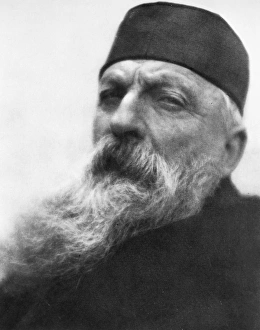Rodin Collection (page 5)
"Rodin: Capturing the Essence of Love and Thought in Sculpture" Step into the enchanting world of Auguste Rodin
All Professionally Made to Order for Quick Shipping
"Rodin: Capturing the Essence of Love and Thought in Sculpture" Step into the enchanting world of Auguste Rodin, where marble comes to life and emotions are frozen in time. The Kiss by Auguste Rodin, a mesmerizing masterpiece created in 1889, stands proudly at the Rodin Museum in Paris, France. This elegant sculpture depicts two lovers locked in a passionate embrace, their bodies entwined as if they were one. Venturing outside the museum walls, The Kiss can also be found gracing the entrance of Musee de L'Orangerie. Its presence there adds an extra touch of romance to this already captivating city. But it is not only love that captivates Rodin's artistic vision; his iconic sculpture known as The Thinker showcases deep contemplation and intellectual prowess. Located within Musee Rodin itself, this pensive figure invites visitors to ponder life's mysteries alongside him. In 1911, Rodin unveiled another masterpiece titled Lovers - a testament to his ability to capture raw emotion with every stroke of his chisel. This evocative sculpture portrays two figures intertwined passionately yet delicately, their bodies merging seamlessly into one harmonious form. Beyond sculpting stone and marble, Rodin was also skilled with other mediums such as graphite and watercolor. His Figure Facing Forward exemplifies his talent for capturing human anatomy with incredible precision and depth. Le Repas du lion is another notable work attributed to Rodin - a collotype print showcasing his mastery over various art forms beyond sculpture alone. It demonstrates how he effortlessly translated movement onto paper through bold red lines on delicate wove paper. Rodin's influence extended beyond traditional art forms; even renowned dancer Isadora Duncan found inspiration from his works during the early 20th century. Her graceful movements mirrored the fluidity depicted within many of Rodin's sculptures.











